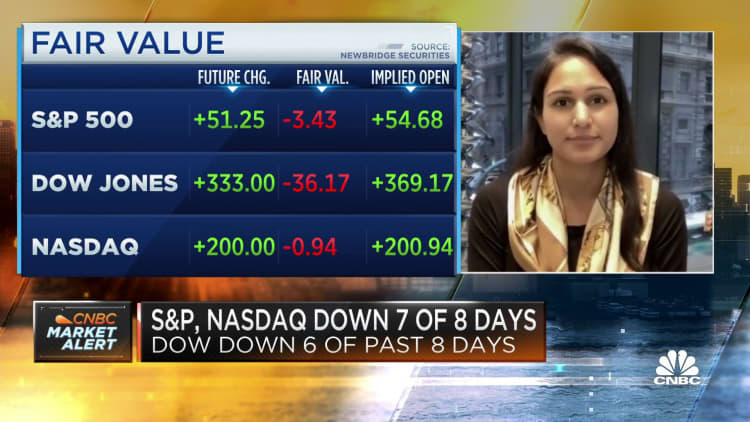There are few bright spots for investors in a down market. But tax-loss harvesting, which allows you to offset profits with losses, may offer a silver lining. Before attempting, however, you need to know your complete tax situation, experts say.
Here's why: There's a lesser-known 0% long-term capital gains tax bracket, meaning it's possible you won't owe taxes on all or part of your investment gains even without loss harvesting.
And the earnings thresholds are "actually pretty high," said Andy Pratt, partner and director of investment strategy at Burney Company in Reston, Virginia, which ranked No. 9 on CNBC's 2022 FA 100 list.
For 2022, you may fall into the 0% long-term capital gains rate with taxable income of $41,675 or less for single filers and $83,350 or less for married couples filing together.
You calculate "taxable income" by subtracting the greater of the standard or itemized deductions from your adjusted gross income, which are your earnings minus so-called "above-the-line" deductions.
Losses may be 'wasted' in the 0% bracket
With the S&P 500 down more than 20% in 2022, there may be ample opportunities to sell off losing assets.
And if realized investment losses exceed realized profits, you can subtract up to $3,000 in losses from regular income per year, with the ability to carry losses above $3,000 forward to offset earnings in future years.
"In a bad year like this, there's nothing quite as nice as having the government share some of your pain," said Dale Brown, board chair at Salem Investment Counselors in Winston-Salem, North Carolina, which ranked sixth on the FA 100 list.

But harvesting losses in the 0% bracket won't pay off since investment gains aren't taxable. Typically, it's better to save the strategy for when earnings exceed the 0% taxable income threshold. Otherwise, "you've wasted a loss," Brown said.
"When we're doing tax loss harvesting, you're not doing away with taxes," Pratt explained. "You're really just deferring taxes into the future," which may be more costly in higher-earning years.
There may be limits to carrying investment losses forward
Another reason not to waste investment losses is there may be limits on how much you can carry forward to future years, depending on where you live and your age, experts say.
While it's possible to carry losses forward for federal taxes, you won't have the same opportunity on every state return, limiting your ability to offset future gains, said John Dahlin, director of tax at IFA Taxes, a division of Index Fund Advisors in Irvine, California, which ranked No. 66 on the FA 100 list.
And depending on the size of your losses, older investors need to consider their life expectancy, Pratt said. "That potential tax benefit will just vanish when the investor passes away," he said.






